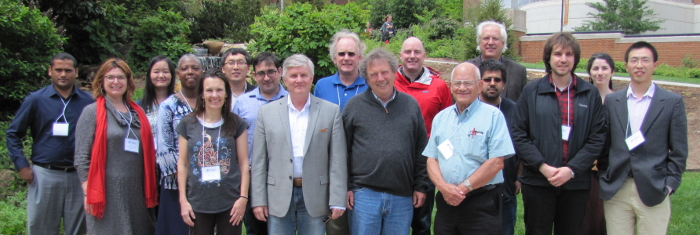
Topic: Applying Optimization Techniques to Agricultural Problems
Dates: May 5-6, 2017
Location: NIMBioS
Organizers:

Objectives:
Syngenta, the third largest agribusiness company worldwide, is conducting a workshop at NIMBioS to explore the application of mathematics and decision theory to agriculture problems.
One important challenge is optimization of the decision-making process regarding the testing and advancement of new seed varieties, improving the process of selecting a few commercially viable varieties from a large number of candidate varieties planted in test plots over a period of years.
This type of problem has typically been considered by agricultural statisticians. Syngenta is interested in bringing advanced methods from mathematical and computer science research to bear on sequential seed gene cultivation and selection problems in agriculture, incorporating elements of statistics, optimization, data mining, machine learning, and mathematical modeling. The goal of this workshop was to bring together researchers from these fields with agricultural experts to collaborate across disciplinary boundaries to investigate solutions to basic and applied agricultural problems.
This was an informative and brainstorming workshop to identify problems and explore solutions. The agenda included 3-4 presentations, followed by group discussion sessions.
Participation was by invitation only.
If you are interested in partnering with NIMBioS to drive a new workshop, please visit our partner page for more information.
|
NIMBioS |
NIMBioS is sponsored by the
National Science Foundation
through NSF Award #DBI-1300426, with additional support from
The University of Tennessee, Knoxville. Any opinions, findings, and conclusions or recommendations expressed in this material are those of the author(s) and do not necessarily reflect the views of the National Science Foundation.
©2008-2018 National Institute for Mathematical and Biological Synthesis. All rights reserved. |

|